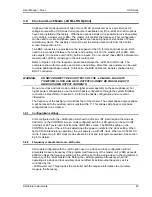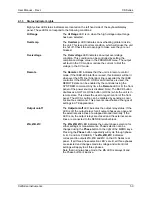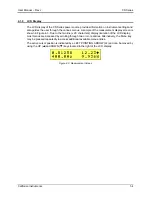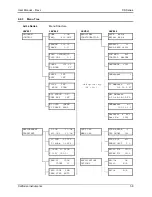
User Manual – Rev J
CS Series
California Instruments
52
4.1.5 Menu
Keys
The CS Series is operated through a series of menus. These menus can be reached by using a
number of menu keys located along the bottom of the LCD display and the UP/DOWN cursors
keys. Several menus have more than two entries. Since the LCD display only has two display
lines, additional entries may not be visible and can be reached only by scrolling up or down
using the UP/DOWN cursor keys. The following menu keys are available:
Figure 4-2: Menu Keys
KEY DESCRIPTION
Set
The
Set
key selects the output setting screen. While this screen
is displayed, the voltage and frequency shuttle knobs can be
used to change voltage and frequency for the selected
phase(s). Additional output settings such as current limit can be
reached by using the down
cursor key.
Meas
The
Meas
key selects the measurement screen for the selected
phase. If all three phases are selected, the measurement data
for phase A will be displayed. There are no user changeable
fields in the measurement screen. The voltage and frequency
shuttles are active while the measurement screen is displayed.
Additional measurement data can be displayed by using the up
and down
cursor keys.
Menu
The top-level menu is accessed by pressing the
Menu
key.
Refer to section 4.2 for details on available menus.
Enter
The
Enter
key is used to confirm selections made in menus or
to activate settings made in SET mode.
Decimal Keypad
A conventional decimal keypad facilitates quick entry of
numerical values such as voltage, current limit, etc. The large
blue enter key will make the value you enter effective. Using
the SET key allows the user to preset all parameter values and
update them all at once by pressing the Enter key.
Back
The Back key may be used to back up to the previous menu
level or previously selected screen. It can also be used as a
backspace key to delete the last digit entered.
If the unit is in remote mode, (
Remote
LED is lit), the front
panel of the power source is disabled. The BACK button
doubles as a GOTO LOCAL button (LOCAL) while the unit is in
remote state. This allows the user to regain control of the front
panel. This LOCAL button can be disabled by sending a Local
Lockout bus command. This prevents unauthorized changes of
settings in ATE applications.






























